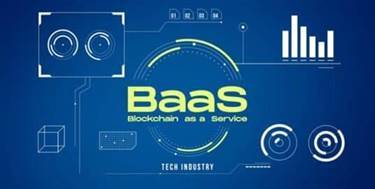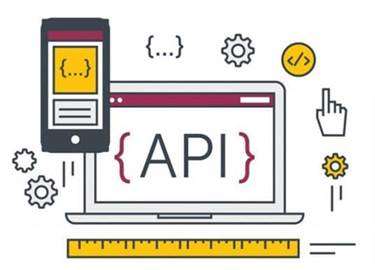When most of the requirements needed are known before the start of the project, but they are expected to change as the project progresses. When there is a need to have the basic functionality delivered as quickly as possible. The cost is low even when there is a change in the scope of the requirement. The partial systems that are to be developed are combined to produce the complete objective of the software. Priority is given to each of the requirements/stages and the requirement of the highest priority is first tackled.
- Rather than adhering to a linear Waterfall method, software developers will react quickly to changes as their product evolves.
- So, it’s a software development method in which the system is designed, implemented, tested and improved gradually and in increments until its finishing point.
- The incremental versions are developed with an iterative waterfall model.
- The everyday work of the software development specialists coupled with specialized vocabulary usage.
- These cycles continue until an optimized version of the product is reached.
The model divides the software development process into 4 phases – inception, elaboration, construction, and transition. All basic activities (requirements, design, etc.) of the development process are done in parallel across these 4 RUP phases, though with different intensity. An iterative and incremental development process can be used to deliver value to customers quickly and efficiently, thus making it a popular methodology for product management. As the software is developed, each new version is delivered to the customer site for testing and feedback, which is taken into account to improve the version. Once the collection and specification of the requirements are completed, the development process is then separated into different versions. Starting with version 1, each version is developed and then deployed to the client site after each successful increment.
How to improve team morale in uncertain times
The incremental development is then carried out in phases once the modules have been divided, encompassing all analysis, design, implementation, necessary testing or verification, and maintenance. Each stage’s functionality is built upon the previously produced functionality, and this process is repeated until the software is finished. Incremental development in software engineering is a process methodology that emphasizes the virtue of taking small steps toward the goal. The major importance of using the incremental model is that it splits the software development into sub-modules and each of the sub-modules is obtained by following the software development life cycle process.
This phase also involves defining the overall project plan and identifying the resources needed to complete the project. Once this document has been created, it goes through a series of reviews and revisions before proceeding to the next phase. It is generally easier to test and debug than other methods of software development because relatively smaller changes are made during each iteration. This allows for more targeted and rigorous testing of each element within the overall product.
What is Change Management Process in Software Engineering: Objectives
Finally, this polynomial optimization problem can be converted to an SDP, which can be handled by SDP solvers that efficiently attain global solutions upon convergence. Projects with unclear business needs or too ambitious/innovative requirements. Projects where failures and downtimes are unacceptable (e.g., medical software, aviation fleet management software). The client has the satisfaction that the entire product will be delivered soon. When you’re in the product manager role, managing various threads of information and evaluating customers’ needs, it’s natural to make assumptions. You don’t always have the answers, so you have to make assumptions to make decisions, whether they work out or not.

Hence, typically the first version or deliverable of the incremental model comprises the core product, then the supplementary features will be developed and incorporated in the following increments. For example, the main or base feature of a Real Estate Marketplace can be its interface, pages and the layout of real estate listings and postings available. The incremental model is used by leading software companies like WhatsApp, Windows, and MS Office. That’s because, as users, day-to-day needs evolve and so do their demands for better products. Hence, these companies evaluate their needs and repeat the SDLC process.
What is iterative development?
As a result, the incremental model releases the project part by part. The stripped-down version provides customers with the opportunity to evaluate the increment and suggest improvements that can be implemented in future increments. The team starts developing the initial increment of the software. This typically involves implementing the core functionality or features that are essential for the software to provide value.

The control list is constantly being revised as a result of the analysis phase. After the software is fully tested and is free of errors and defects, the client reviews the test results and approves the deployment. Upon product deployment, the new functionality becomes available to the current end-users of the system. In some incremental development model cases, product deployment may be divided into several phases based on the company’s business strategy. A user acceptance test is one of the ways companies seek feedback from the intended users. Thus, the software can be tested in a pre-production environment, before a real-world production, thereby leading to better results.
Advantages and Disadvantages of the Incremental Model
The agile methodology focused on processes that were more iterative and incremental in their approach, allowing you to obtain critical information much faster and make better decisions. That being said, we hope that you’ve found value in this guide and it’s been helpful in bolstering your understanding of software development processes and the incremental model. Overall, this shows that the incremental development model is important for products that need to be unveiled to the market early. This is especially crucial for a marketplace system that needs to gain a large initial audience or user base.
This gradual growth of requirements leads to less requirement changes and far less time spent managing such changes. Note that the above benefits of using prototypes can only be achieved if the cost of finding the prototypes is not exorbitant. While some clustering methods can be very slow, tools like CHUNK run in near-linear time. The application and validity range of the graybox model will crucially depend on the number of different operating points and the variance in the operating variables . Practically any startup initiatives, when end users’ early feedback is required. Simple small or mid-sized projects with clearly defined and unchanging requirements .
examples of iterative and incremental development in action
Therefore, in terms of RCM, the method allows flexibility in handling dynamically changing requirements. As discussed above, this leads to a better understanding of the system requirements and makes the inclusion of changes less complicated. There is an aspect of dynamic model construction in as well, though this work differs from the first two in that it constructs the network in response to incoming observation data rather than in response to queries. The system takes as input a query formula along with a probability threshold. The algorithm does not compute the exact probability of the query formula; rather it answers whether or not that probability is less than, greater than, or equal to, the threshold. The justification for this approach is that in decision-making or planning situations, the exact value of the query variables is usually unimportant—all that matters is what side of the threshold the probability lies.

Then, we’ll compare this model with the waterfall model in more detail and discuss its advantages and disadvantages. Finally, we’ll look at examples of the incremental model and learn how to implement it. When developing software, your approach to project management will make or break your product. In agile software development, teams are likely to employ incremental or iterative techniques. However, trends over the past few years show us that teams thrive when using both. Various models are available for developing software and meeting the desired objectives, but incremental modeling achieves 100% of expected software objectives.
Incremental build model
Microsoft Teams Collaborate on Wrike projects without leaving Microsoft Teams. Salesforce Integrate client data seamlessly https://www.globalcloudteam.com/ between Wrike and Salesforce. Project Management Plan Agile projects, track deadlines, and deliver results.
